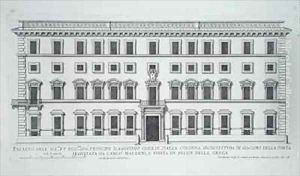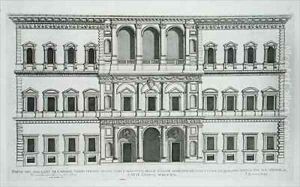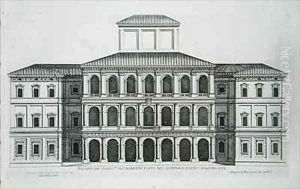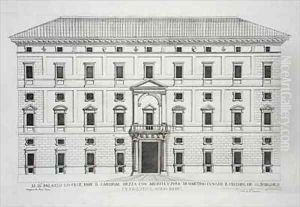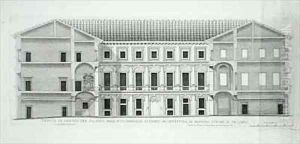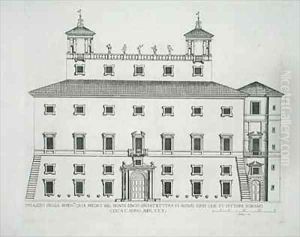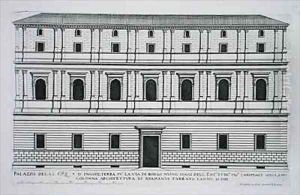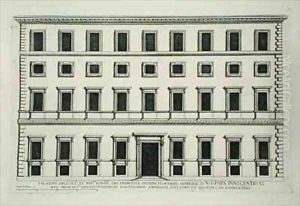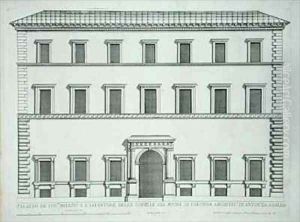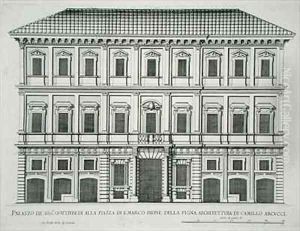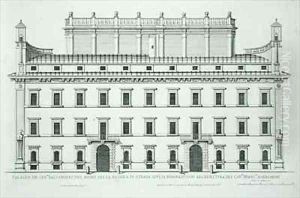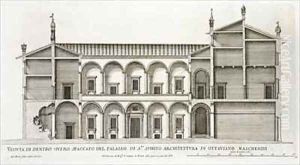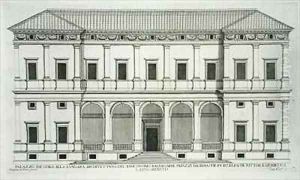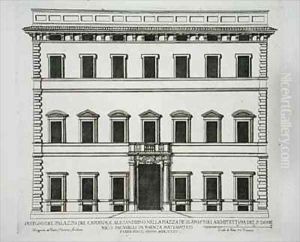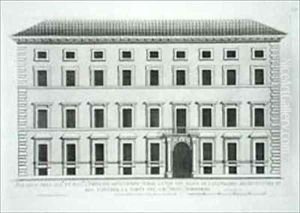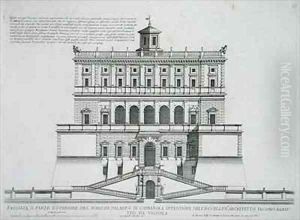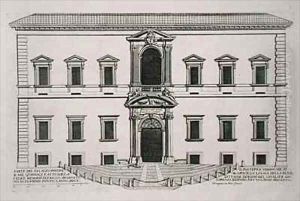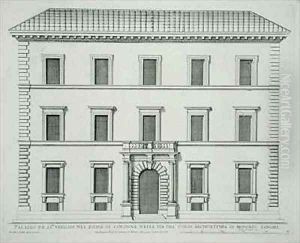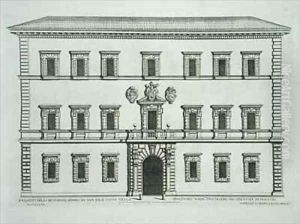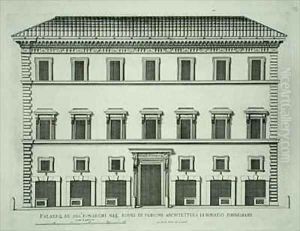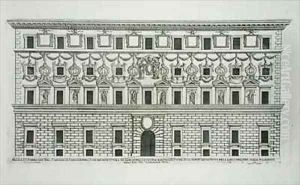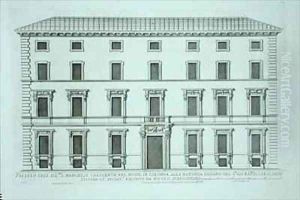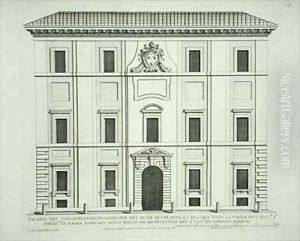Pietro or Falda, G.B. Ferrerio Paintings
Giovanni Battista Falda was an Italian artist, engraver, and architect known for his detailed prints and drawings of Rome's architecture, gardens, and antiquities. Born in 1630 in Valduggia, a small town in the Piedmont region of Italy, he moved to Rome at a young age. Once in Rome, he became an apprentice to the renowned etcher and printmaker, Giovanni Giacomo De Rossi, who was the leading publisher of prints in Rome at that time.
Falda's work was instrumental in documenting the Baroque transformation of Rome under the papacy of Alexander VII. He was particularly adept at capturing the grandiose urban projects that were characteristic of this period. His series of etchings titled 'Le Fontane di Roma' (The Fountains of Rome) and 'Le Fontane nei Palazzi e ne Giardini di Roma' (The Fountains in the Palaces and Gardens of Rome) are considered some of his most important works. These etchings not only depicted the fountains as architectural and sculptural marvels but also included the surrounding urban context, thus providing a valuable resource for understanding the layout and design of Rome in the 17th century.
Falda was also known for his work 'Il Nuovo Teatro delle Fabriche et Edificii di Roma Moderna' (The New Theatre of the Buildings and Architecture of Modern Rome), a collection of prints that illustrated the new buildings, streets, and squares of contemporary Rome. His attention to detail and the accuracy of his depictions made his prints sought after by collectors and scholars alike.
In addition to his prints of Rome's architecture, Falda contributed to the recording of archaeological findings. He worked on 'Le Antichità Romane' (Roman Antiquities), a series of etchings that showcased the excavations of Roman ruins and artifacts.
Though his career was relatively short, Falda's influence on the documentation of Baroque Rome was profound. He died in 1678, leaving behind a legacy that would provide inspiration and information to architects, historians, and artists for generations to come. His detailed and precise engravings remain an invaluable visual record of Rome during a period of significant urban and cultural transformation.
